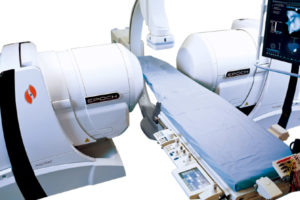
Stereotaxis and Princess Grace Hospital in Monaco have announced the publication of a study comparing the speed of lesion formation of magnetic catheters using the Niobe system to manually controlled contact force catheters.
The analysis, published online in the Journal of Cardiovascular Electrophysiology (DOI: 10.1111/jce.13222), included 1,008 radiofrequency applications in 21 patients who underwent atrial fibrillation (AF) ablation procedures.
“The Niobe system has long been recognised as providing the safest method for performing cardiac ablations and for allowing physicians to reach critical areas of the heart that would otherwise be impossible to access. There has been less certainty regarding the effectiveness of the lesions that are delivered,” says Sok-Sithikun Bun, Princess Grace Hospital. “Our clinical research builds upon published bench studies that have illustrated the magnetic catheter’s stable focal contact. In this study, we evaluated the time it takes to create transmural lesions in patients undergoing AF ablation. We found lesions created using the Niobe system achieve the desired endpoint almost 20% faster than those administered using a force-sensing catheter. The magnetic system offers physicians the advantage of nearly unlimited reach and the confidence to deliver effective lesions.”
The research team analysed 1,008 RF applications from patients undergoing remote magnetic navigation (n=11) or contact force-guided (n=10) ablation procedures for paroxysmal AF. They assessed electrograms at the beginning of each RF application and the time was measured until the shape of the waveform changed in a manner suggesting the attainment of a transmural lesion. Delivery of RF applications in the contact force-guided group had an average force of 11 grams and required 5.6 seconds to achieve the necessary waveform change. In the remote magnetic navigation-guided catheter group, the waveform change took 4.5 seconds, a reduction of approximately 20%.








